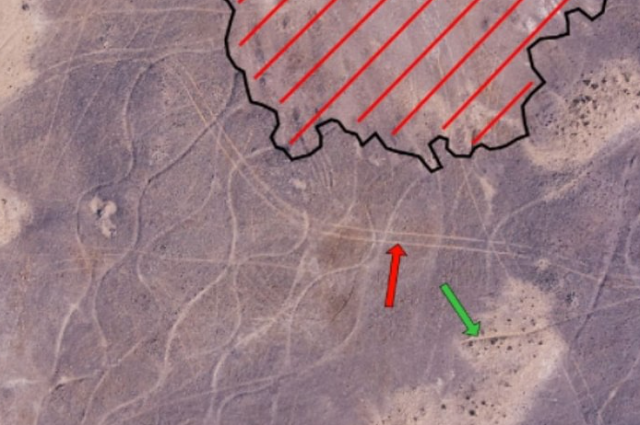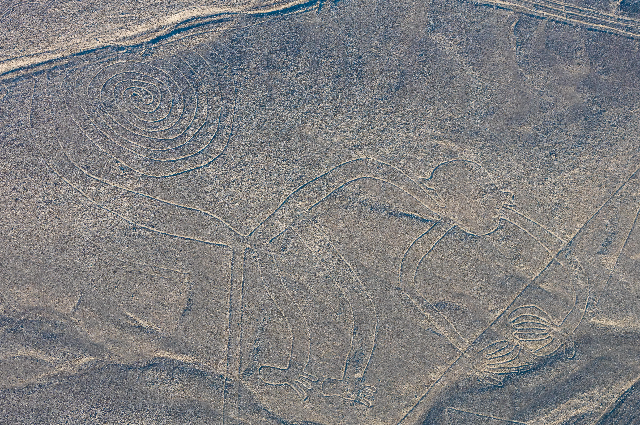
The Indian subcontinent is full of diversity and it is well reflected in the enchanting folk art, crafts and paintings across various regions. The figures that ancient civilizations made is a reflection of the indigenous lifestyle and a perfect example of artistic expression through simple yet distinct composition. Recently, two researchers who used satellite imagery from space have identified the largest possible geometric figures made by humans on earth, and it has been found on the Indian subcontinent.
According to a recent study published in the Archaeological Research in Asia, an independent researcher duo of father and son named Carlo and Yohann Oetheimer have stated that they may have found the largest set of drawings in the world. They originally found them in 2016 on Google Earth while they were conducting a field study in the Thar Desert in India. Essentially, they identified eight sites that resembled to include some drawings or human-made lines, but onsite analysis revealed that four of them are associated with tree plantations, while others remained unresolved.
The researchers have recognized some massive drawings, and it has been found near the town of Boha, India, and it adds up a total distance of about 30 miles. The mysterious lines are known as geoglyphs, and they are the largest in the cluster named Boha 1. It is an asymmetric spiral line that measures some 7.5 miles and lies right next to another distinctly patterned geoglyph named Boha 2, which is almost similar in size. The figures of this drawing have no equivalent across the world, and their purpose and, meaning have remained unknown till now.

Source: commons.wikimedia.org
There are several famous geoglyphs across the world, including the Nazca Lines and England’s White Horse of Uffington, but these new figures at Boha have a more recent origin within the past few centuries. The Nazca Lines of southern Peru are one of the most recognizable geoglyphs in the world, and it contains dozens of distinct figures that encompass a larger area than the Boha figures in India. However, no single Nazca line is even half as long as either Boha 1 and 2.
The lines which are linked to Boha 1 and Boha 2 add up almost 16 miles, but there are likewise smaller geoglyphs in the region that reveal other puzzling abstract designs. The researchers have estimated that those lines are at least 150-years-old based on the vegetation that has grown over them, among other factors, the researchers have planned to use thermoluminescence dating to find a more definite age in the future. Boha 1 is significantly unusual from the rest of the region, the lines in the east-Boha are extensive, uniquely patterned, and do not resemble to be linked with any plantations. The Boha 1 spiral attains as a remarkably large cluster, but Boha 2 is strikingly different as it covers a twisted line, a small spiral, and an immense series of subparallel even lines united by rounded U-shaped turns.

Similarly, the researchers have proposed that this region is quite flat to greatly perceive the figures from a height, forming uncertainties on the efficiency of the lines as landmarks. Though the researchers highlight that much more work needs to be done, with the efforts to keep the geoglyphs from corrosion. The researchers also claim that the figures may have a sacred or astrophysical explanation behind them. The recent geoglyphs coincide with the location of intriguing memorial stones, and nine monoliths of various shapes and sizes, with the tallest standing more than five feet high, underscoring another possible road of future research for some ancient cultures.
Getting a more extensive read on the various uncovered mysteries about the patterns, including their artistic determination, will demand a lot of fieldwork and association with the local people at Boha. The father-son duo tried to talk with locals but no one had any answers about the drawings. However, the researchers still need to complete the study, needing them to thoroughly connect with the people and make the on-field survey with various equipment. They have been similarly remained convicted that these massive and unique geoglyphs are closely connected to their geographical and cultural context, and probably contain a universal message linked to some sacred activity of the cosmos. And the researchers certainly believe that those unique drawings at Boha can only be understood in their specific historical, social, and cultural background.
___________________________________________
Reference:
- www.sciencedirect.com
- www.researchgate.net
